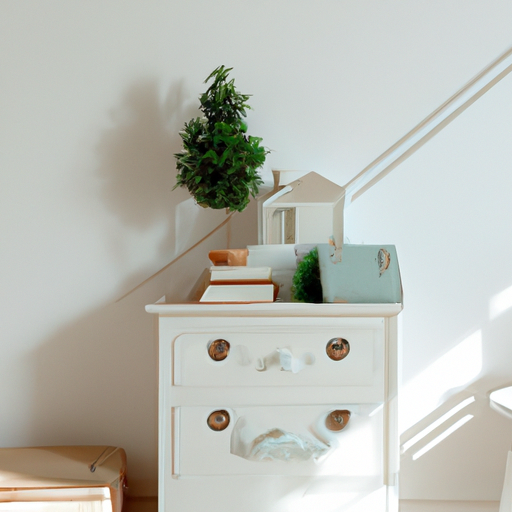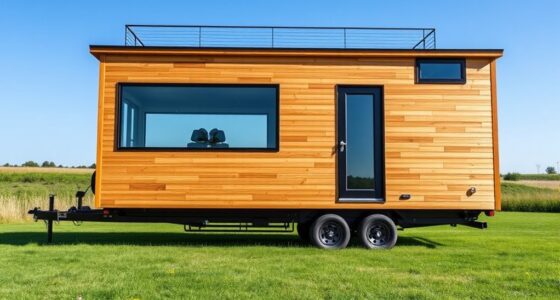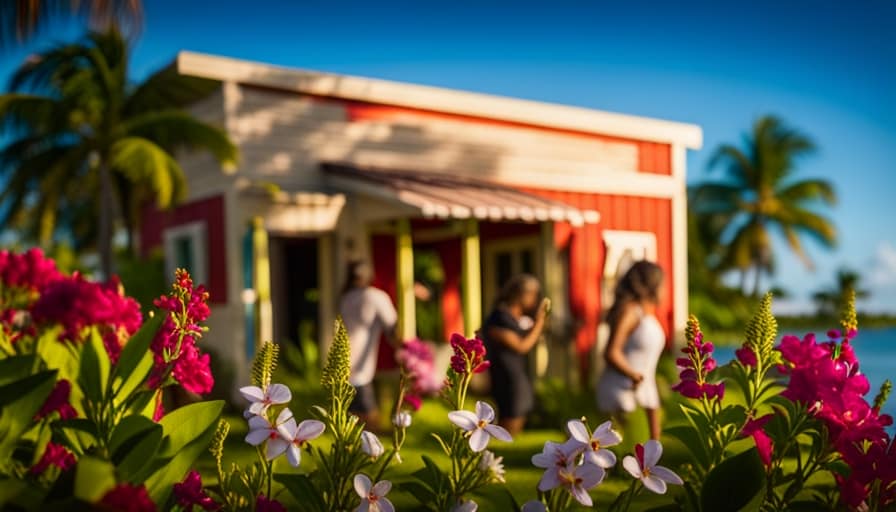The Overlander, originally a snowplow, is now a distinctive and environmentally friendly dwelling for nomads, drawing in many thrill-seekers seeking a nomadic lifestyle. This converted snowplow acts as both a permanent home and a mode of travel, allowing its inhabitants to journey the world in a sustainable manner.
The conversion process took 10 months to complete, and the retired couple now live off their pensions, exploring Europe and most of North America. The overlander boasts an impressive fridge set-up and runs on water and solar power, with a battery bank as backup.
The interior features a bedroom, dining room/lounge area, kitchen, bathroom, and hallway, as well as a pass-through from the cab to the living area. The overlander is a practical and affordable lifestyle, representing a unique and sustainable living solution.
In this article, we will delve into the conversion process, exploring the features of the overlander and the philosophy and lifestyle of those who choose to live in a sustainable nomadic home.
Key Takeaways
- The Snowplow turned Overlander is a sustainable nomadic home that has caught the attention of many adventurers seeking a lifestyle on the road.
- The Overlander runs on water and solar power, with a battery bank as a backup, and features an impressive fridge set-up and a functional and space-efficient interior.
- The retired couple who owns the Overlander live off their pensions, exploring new places and meeting new people while reducing their carbon footprint, proving that the Overlander is a practical and affordable lifestyle.
- The Overlander represents a unique and sustainable living solution that doubles as a house and a vehicle, allowing its owners to travel without worrying about the cost of accommodation.
Conversion Process
The conversion process of the former snowplow into an overlander tiny house took 10 months to complete. It involved the use of various tools for construction and installation tasks, such as saws, drills, and welding equipment.
Despite the challenges faced during the process, Phil and Lynn were able to build a unique fridge set-up on the exterior, which makes use of the cold air produced by the air conditioning unit. They also installed water and solar power utilities, which allow them to live comfortably and sustainably on the road.
The interior of the overlander was designed to be functional and space-efficient. The living area includes a bedroom, dining room/lounge area, kitchen, bathroom, and hallway. The cab has a pass-through to the living area, which makes it convenient for the couple to access their living space while on the road.
An electrical system with a battery bank was also installed, which allows the couple to power their appliances and devices without the need for an external power source. Overall, the conversion process was challenging, but the end result was a unique and sustainable living solution.
Overlander Features
Featuring a unique fridge set-up, water and solar power utilities, and a compact yet functional bathroom, the Man 44 Overlander converted by Phil and Lynn boasts a pass-through cab, queen-sized bed, and battery bank electrical system, making it a versatile and practical living space for their nomadic lifestyle. The overlander’s exterior features a fridge set-up that is not commonly found in other tiny homes. The fridge is accessible from both inside and outside the vehicle, making it convenient for outdoor cooking and entertaining.
In addition to the unique fridge set-up, the overlander also utilizes solar power advantages, which allow Phil and Lynn to live off the grid comfortably. The solar panels are mounted on the roof of the overlander and provide power for the interior lights, water pump, and other electrical devices. The battery bank electrical system ensures that the overlander has a reliable power source even when the sun is not shining. These features emphasize the overlander’s practicality and sustainability, making it an example of a unique and sustainable living solution.
| Feature | Description |
|---|---|
| Utilities | Water and solar power |
| Bedroom | Queen-sized bed |
| Living Area | Dining room/lounge area |
| Kitchen | Fully functional with fridge, cooktop, and sink |
| Bathroom | Compact but functional with a shower, sink, and toilet |
| Electrical System | Battery bank system powered by solar panels |
| Exterior | Unique fridge set-up accessible from inside and outside of the vehicle |
Philosophy and Lifestyle
Living life to the fullest is a philosophy that Phil and Lynn embody through their unique and practical approach to travel and housing.
Their snowplow turned overlander is not only a sustainable and affordable living solution, but it also allows them to fulfill their dreams of traveling the world.
The retired couple lives off their pensions, and by converting a former snowplow into a mobile home, they have created a lifestyle that is both practical and fulfilling.
Their overlander tiny house is a perfect example of how one can lead a fulfilling life without breaking the bank.
By living in a vehicle that doubles as a house, they are able to travel to various destinations without worrying about the cost of accommodation.
This lifestyle allows them to explore new places and meet new people while reducing their carbon footprint.
The overlander is an inspiration for those who wish to live fully and sustainably, without compromising on their dreams of travel.
Frequently Asked Questions
What inspired Phil and Lynn to convert a snowplow into an overlander tiny house?
The inspiration behind Phil and Lynn’s snowplow conversion into an overlander tiny house can be attributed to their desire to live a sustainable lifestyle while exploring the world. The snowplow conversion took 10 months to complete and now serves as their full-time home and vehicle.
The retired couple lives off their pensions and prioritized practicality and affordability in their overlander’s design. The overlander is equipped with sustainable utilities such as solar power and water.
Phil and Lynn’s philosophy of living life to the fullest is reflected in their unique and sustainable living solution. The snowplow conversion into an overlander tiny house is an excellent example of how a practical and affordable lifestyle can also be sustainable.
How did Phil and Lynn decide on the specific design features for their overlander?
The specific design features of Phil and Lynn’s overlander were inspired by their desire for practicality, functionality, and sustainability. The couple carefully considered every aspect of the build, choosing durable and lightweight materials for the construction, such as aluminum and fiberglass.
The design inspiration came from their extensive travels and experience with living in small spaces, which informed the layout and functionality of the overlander. The interior includes a compact but functional bathroom, a fully-equipped kitchen, a dining area/lounge, a hallway, and a queen-sized bed. The exterior features a unique fridge set-up, solar power, and a battery bank.
Additionally, the overlander’s cab has a pass-through to the living quarters, creating a more efficient use of space. Overall, Phil and Lynn’s design choices were driven by their practical needs and their desire to create a sustainable and unique living solution.
What challenges did Phil and Lynn face during the conversion process?
During the conversion of their former snowplow into an overlander tiny house, Phil and Lynn faced a number of challenges. One interesting statistic is that the conversion process took 10 months to complete.
The challenges they encountered included making adjustments to the overlander, such as constructing the body and setting up the utilities, including water and solar power. They also had to design the interior to include a bedroom, dining room/lounge area, kitchen, bathroom, and hallway, while ensuring that the electrical system was functional with a battery bank.
Despite these challenges, Phil and Lynn were able to convert the snowplow into a practical and affordable home, which they now use to travel the world. Their overlander is an example of a unique and sustainable living solution, which is both inspiring and informative for those interested in alternative living arrangements.
What advice would Phil and Lynn give to someone interested in converting a vehicle into a tiny home?
For those interested in converting a vehicle into a tiny home, Phil and Lynn offer some tips and resources for conversion.
Firstly, they advise researching and planning extensively before beginning the conversion process. This includes researching building codes, laws, and permits in the area where the converted vehicle will be used.
Additionally, they suggest utilizing online resources and forums for inspiration and guidance, as well as seeking advice from professionals such as electricians and plumbers.
It is also important to prioritize functionality and practicality in the design, as well as ensuring the vehicle can handle the weight and demands of the conversion.
Finally, they recommend embracing the unique challenges and opportunities of tiny living and enjoying the freedom and flexibility it can offer.
How has living in the overlander changed Phil and Lynn’s perspective on sustainable living and travel?
It is ironic how living in a tiny overlander converted from a snowplow has expanded Phil and Lynn’s perspective on sustainable travel and minimalist lifestyle.
Their full-time life on the road has made them conscious of their impact on the environment and their consumption habits.
They have become more resourceful, relying on solar power and water conservation methods.
Additionally, the overlander’s compact size has forced them to focus on what is essential, resulting in a minimalist lifestyle.
Overall, living in the overlander has led Phil and Lynn to appreciate sustainable travel and minimalist living as a practical and fulfilling way of life.
I’m Theodore, and I love tiny houses. In fact, I’m the author of Tiny House 43, a book about tiny houses that are also tree houses. I think they’re magical places where imaginations can run wild and adventures are just waiting to happen.
While tree houses are often associated with childhood, they can be the perfect adult retreat. They offer a cozy space to relax and unwind, surrounded by nature. And since they’re typically built on stilts or raised platforms, they offer stunning views that traditional homes simply can’t match.
If you’re looking for a unique and romantic getaway, a tree house tiny house might just be the perfect option.










